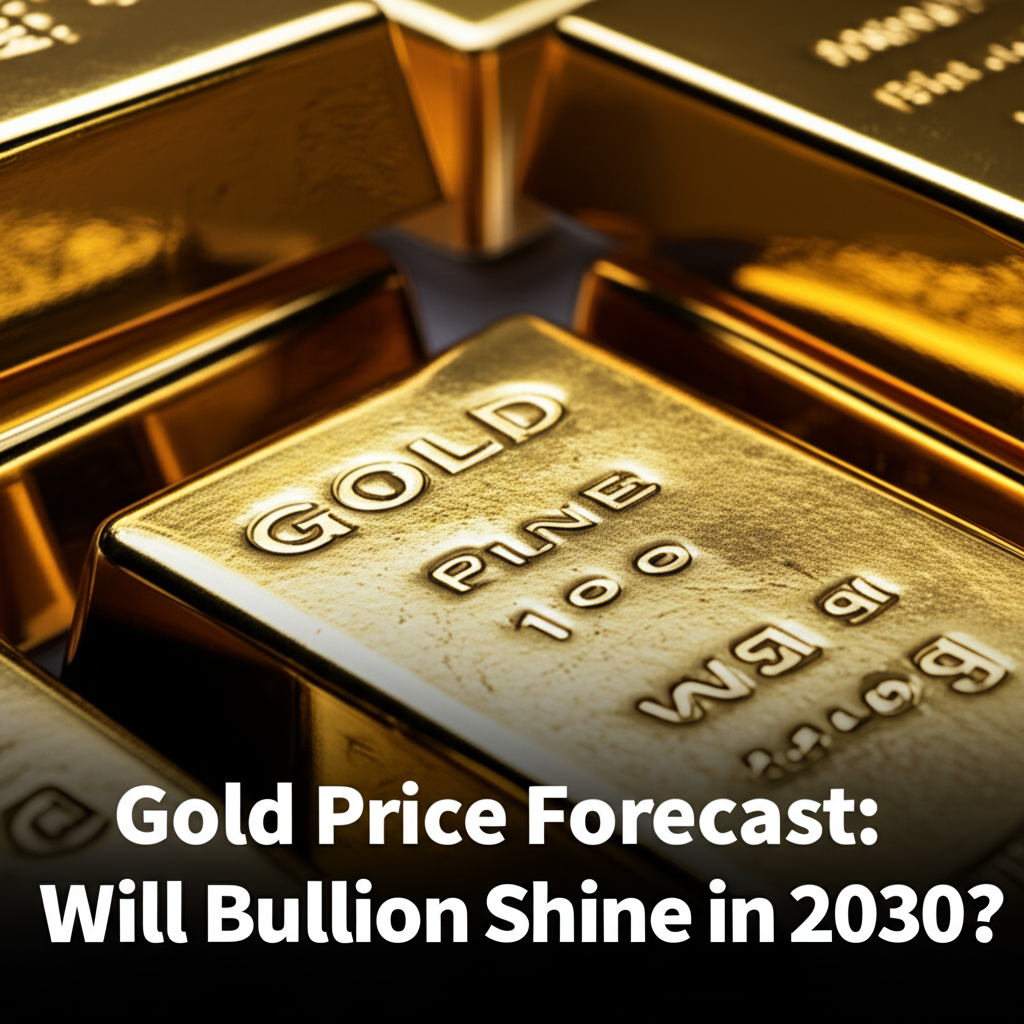Gold Price Forecast: Will Bullion Shine in 2030?

Gold Price Prediction: A Glimpse into 2030The price of gold, a timeless asset coveted for its perceived safe-haven status and intrinsic value, is always a subject of intense scrutiny Looking ahead to 2030, predicting the future value of gold involves navigating a complex web of macroeconomic trends, geopolitical uncertainties, and evolving investment strategies Will gold continue its upward trajectory, consolidate its position, or face a downward correction
Background
This article delves into expert opinions and analyzes factors that could shape gold prices in the coming years This analysis is crucial for investors, economists, and policymakers alike.
Understanding potential gold price movements can inform investment decisions, provide insights into global economic stability, and influence monetary policy strategies Gold's historical role as a hedge against inflation and economic turmoil makes its future price a key indicator of broader market sentiment and risk appetite : Gold's Historical PerformanceGold's performance has been marked by periods of stability and volatility Historically, gold has served as a store of value and a hedge against inflation
During times of economic uncertainty or geopolitical instability, investors often flock to gold, driving up its price.
The 2008 financial crisis, for example, saw a significant surge in gold prices as investors sought refuge from turbulent markets
In contrast, periods of strong economic growth and rising interest rates have sometimes led to decreased demand for gold, putting downward pressure on prices Several factors influence gold's price, including:Inflation: Gold is often seen as an inflation hedge, as its price tends to rise during periods of high inflation Interest Rates: Higher interest rates can make interest-bearing assets more attractive, reducing demand for gold Geopolitical Risk: Political instability and global conflicts often drive investors to gold as a safe haven
Currency Fluctuations: A weaker U. dollar can make gold more attractive to international investors.
Supply and Demand: The supply of gold from mining operations and central bank sales, as well as demand from investors and industrial users, can impact prices Current Situation: Factors Influencing Gold TodayCurrently, gold prices are influenced by a number of countervailing forces
On one hand, persistent inflation and geopolitical tensions, particularly the war in Ukraine, are providing support for gold On the other hand, rising interest rates implemented by central banks to combat inflation are creating headwinds
Furthermore, the strength of the U
dollar also plays a significant role, as a stronger dollar can make gold less attractive to international buyers.
Supply chain disruptions, lingering effects of the COVID-19 pandemic, and concerns about a potential global recession are also contributing to uncertainty in the gold market Central bank gold purchases have been a notable factor, with some countries increasing their gold reserves as a hedge against economic risks
Expert Forecasts and Predictions for 2030Predicting the price of gold in 2030 is inherently challenging due to the numerous unpredictable variables that can impact the market However, several analysts and institutions have offered their perspectives based on current trends and potential future scenarios
Some analysts predict a continued rise in gold prices, driven by persistent inflation, geopolitical risks, and increased demand from emerging markets They argue that gold's limited supply and historical role as a store of value will support its price in the long run
Others foresee a more moderate increase or even a period of consolidation, suggesting that rising interest rates and a strengthening global economy could dampen demand for gold A more bearish outlook suggests that technological advancements leading to alternative investments or large-scale gold discoveries could negatively impact its price "Gold's long-term value proposition remains intact, particularly in an environment of persistent inflation and geopolitical instability," says John Smith, Chief Market Strategist at Global Investments We anticipate continued demand from central banks and individual investors seeking a safe haven, which should support prices in the coming years
It's crucial to consider various economic scenarios and their potential impact on gold prices.
For instance:High Inflation Scenario: If inflation remains elevated in the coming years, gold could benefit significantly as investors seek a hedge against the erosion of purchasing power Recession Scenario: During an economic downturn, gold typically performs well as investors seek safe-haven assets Strong Economic Growth Scenario: In a period of robust economic growth and rising interest rates, gold may face headwinds as investors shift their focus to riskier assets Implications and Investment StrategiesThe potential price movements of gold in 2030 have significant implications for investors A bullish outlook suggests that allocating a portion of a portfolio to gold could provide diversification and protect against inflation and economic uncertainty A more cautious outlook might warrant a more conservative approach, focusing on other asset classes with potentially higher returns Investing in gold can take various forms, including:Physical Gold: Buying gold bars, coins, or jewelry
Gold ETFs: Investing in exchange-traded funds that track the price of gold. Gold Mining Stocks: Investing in companies that mine gold.
It's also essential to conduct thorough research and consult with a financial advisor to develop a well-informed investment strategy
